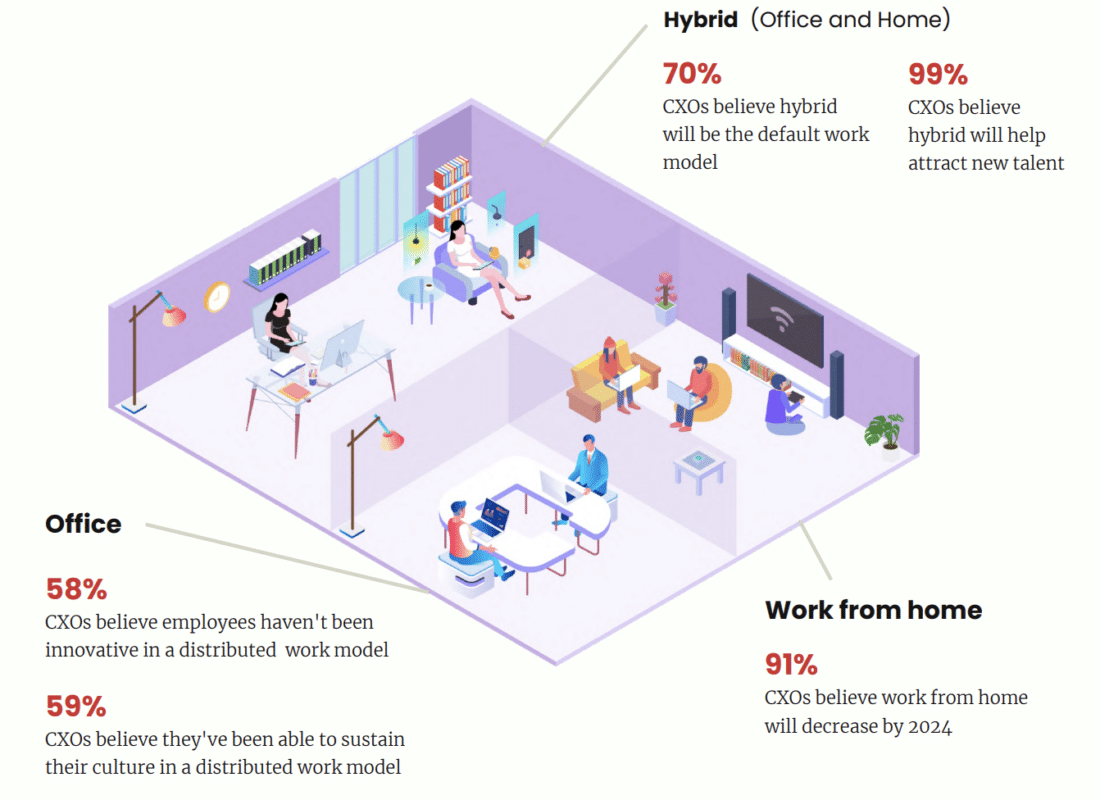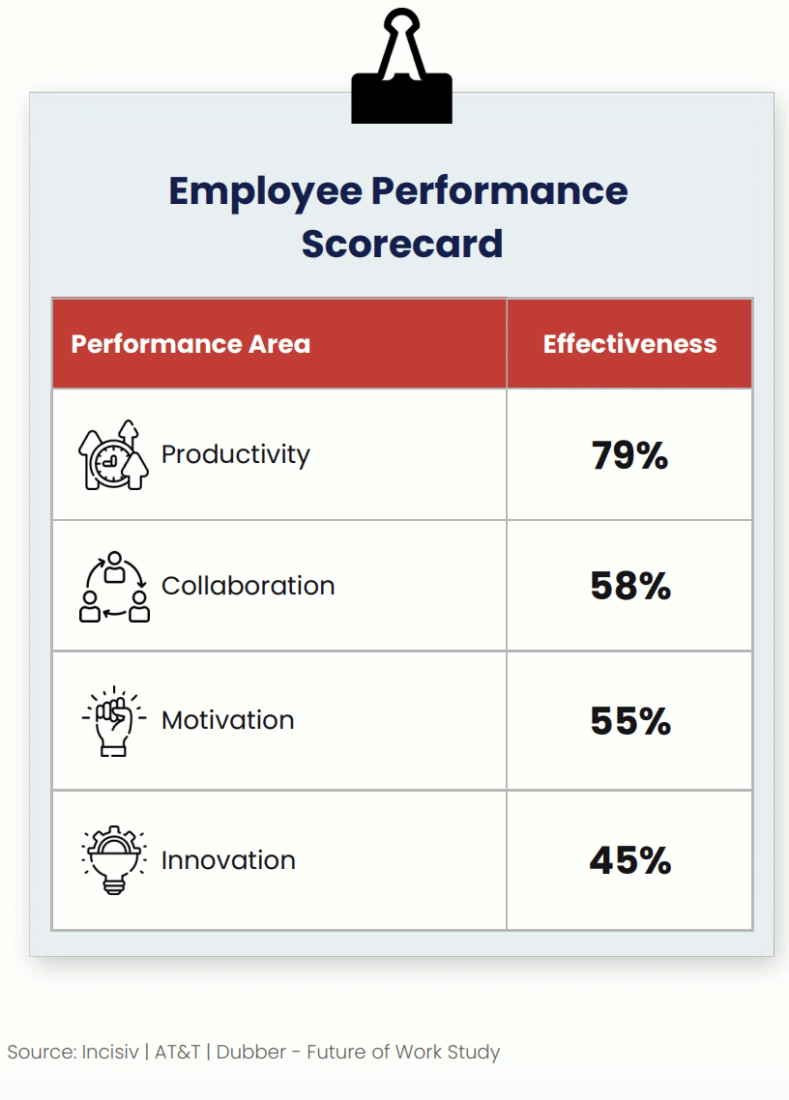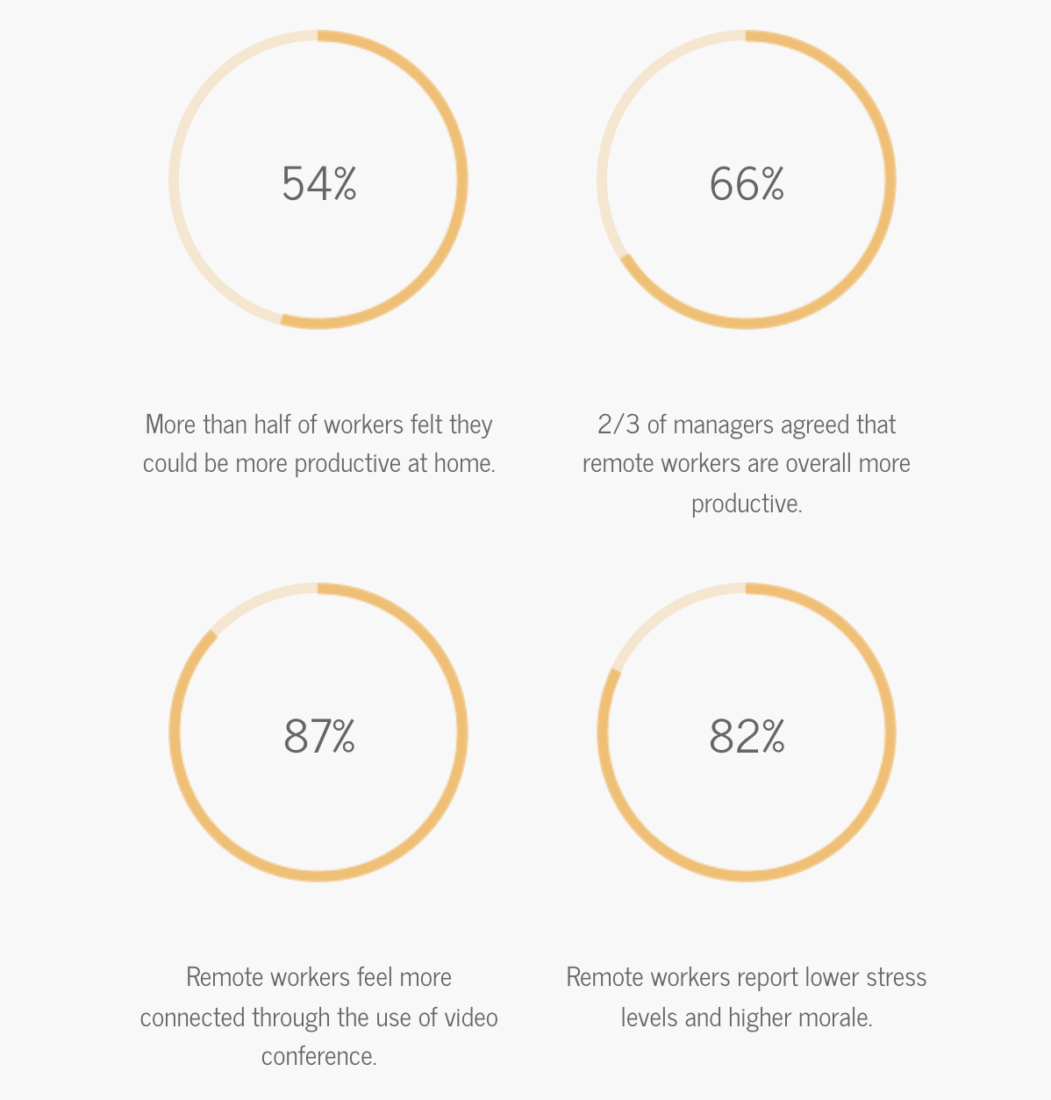Covid-19 changed the way we work—and where we work. We went from going into the office every day (and looking presentable), to working at home every day (wearing sweatpants). Slowly but surely, however, both employers and employees have begun to embrace the new hybrid workplace. Companies have had two years to determine what this unique combination of onsite and remote work will look like. But according to a new study, 72% of businesses lack a clear and definitive hybrid work strategy and instead have implemented temporary fixes.

The Future of Work
The State of the Industry: Future of Work survey, conducted by AT&T and Dubber Corporation, shows that the hybrid workforce will become the standard operating model industry-wide by 2024. Senior executives which participated in the study validated this finding. In fact, 91% believe a hybrid work model will improve workforce diversity. For example, 100% of executives say that a hybrid work model will help them attract young talent. That said, half of executives acknowledge the need for a shift in workforce culture to sustain a hybrid model.
Given that only one-quarter of employees were working in an office last year, we know that employees prefer a hybrid work model. It’s a delicate balance, to be sure. You want your employees to be happy (and safe), but you also need your business to succeed.
Three major obstacles to a functional hybrid workplace include a lack of workplace innovation; insufficient oversight; and cultural shifts.
According to the Future of Work research, the primary challenges to implementing effective hybrid work are:
- Maintaining employee oversight
- Losing institutional/tribal knowledge
- Sustaining company culture
Although 80% of businesses considered employee performance during this transition as effective, not even half were confident in employee innovation during that time.

A Balancing Act
Alicia Dietsch, Senior Vice President of Business Marketing at AT&T, believes that new hybrid work models need to be designed to balance both employee expectations and business needs. “We are all still learning what right looks like, but once we are done, I believe we will all see tremendous benefit from the shift,” Dietsch told Velocitize. “To be successful, companies will need strong culture, intentional connection, and creative technology to develop a durable, satisfying environment where employees can continue to thrive while at home and in the office.”
The hybrid workplace presents an excellent opportunity to connect with younger people and members of Gen Z by meeting their expectations. “We know that for some, the pandemic brought that moment of reflection, and flexibility has become high on job seekers’ list,” Dietsch said. “Gen Z is looking for strong compensation and benefits packages as well as flexible paid-time off, which is not unlike other generations. But they are also looking for clear career paths and strong mentorship opportunities.”

The New Normal
Obviously both working from home and working in the office have their own benefits. Despite the reality that a hybrid model is definitely the future, employers and employees may lose out on those in-person interactions.
“The fact is, we were all more productive to some degree working completely from home,” Dietsch said. “This works great when we are talking about specific tasks with well-defined business processes, but what about when we need to create something that doesn’t exist? Or produce a meaningful output with little to no structure around how we need to get there? There is no substitute for in-person collaboration to solve these challenges; however, technology can get us pretty close.”
It’s no surprise, then, that Artificial Intelligence and Machine Learning will be the most transformative technologies going forward. They can both provide communication across both virtual and in-person platforms.
As a hybrid work environment overtakes the conventional workplace, the practice of agile marketing makes even more sense. When businesses provide employees with a sense of trust, they can thrive inside a more flexible and autonomous team atmosphere. That way, you’re not emphasizing the process; you’re focused on the final outcome.
In this brave new workplace, businesses must consider remote work the norm rather than something approved of only in circumstances. It’s no longer a nice to have; it’s a have to have.





Join the conversation